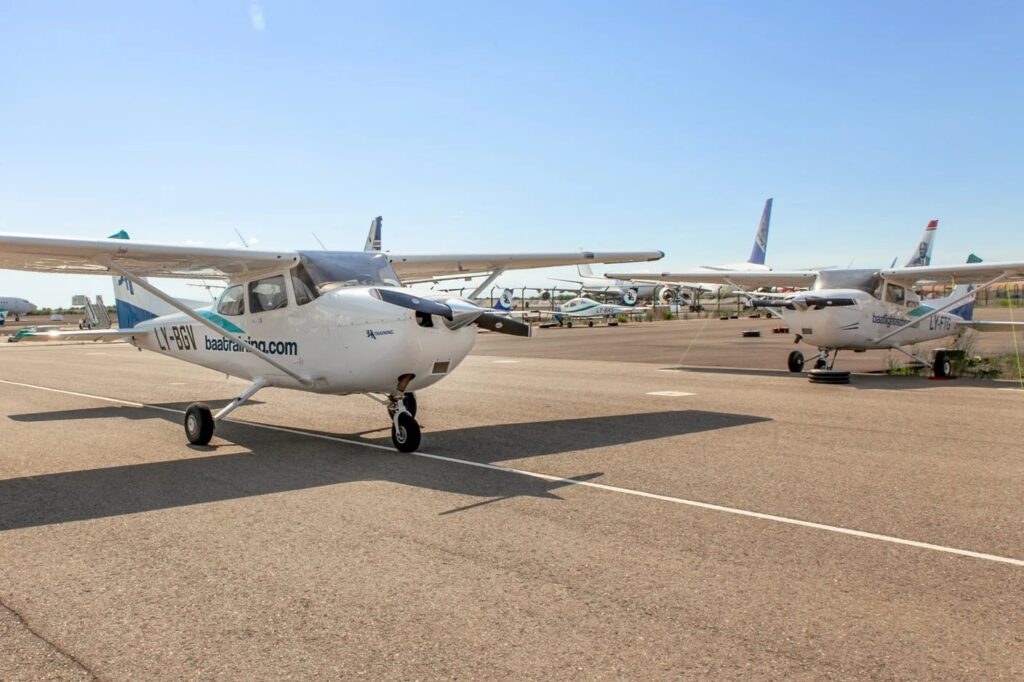The aviation industry is facing a perfect storm: amid a surge in aircraft orders, the recruitment and retention of pilots are under immense strain. The COVID-19 pandemic only exacerbated existing pilot shortages, with hiring freezes and early retirements compounding the issue. However, efforts are underway both at airlines and flight schools to combat this looming crisis.
The deepening pilot gap
While air travel has rebounded post-pandemic – full year 2023 traffic was at 94.1% of 2019 levels – there just aren’t enough pilots to cope with demand, and this is expected to intensify in the years ahead. Boeing predicts that 602,000 new pilots will be needed globally by 2041. Looking only at Europe, that amounts to a shortfall of 122,000 new pilots.
Then there are issues with technicians and cabin crew. Across Europe, it is anticipated that, by 2041, the aviation industry will experience a shortage of these specialists of 120,000 and 207,000 respectively. These are big numbers, particularly given soaring demand for new planes. Figures published by Boeing in June suggest that, in two decades, there will be 48,575 aircraft in the skies, compared to 24,500 today.
The predictions look set to pan out. Just look at the 2023 Dubai Airshow, which took place in November. Boeing secured a total of 295 firm orders, and Airbus received 86 orders. Orders flew thick and fast, making it the busiest Dubai Airshow since 2017. More recently, at the Wings India event held in Hyderabad from January 18 to 21, Boeing racked up another order for 150 Boeing 737 MAX aircraft.
BAA Training, one of Europe’s leading independent aviation training centers, says that the combination of rising air travel demand (a year-on-year increase of 36.9% in passenger demand in 2023), many pilots reaching mandatory retirement age (in the US, nearly 50% of the commercial airline workforce will retire in the next 15 years), and airlines ramping up their operations with new developments and aircraft orders will further elevate the pilot shortage.
Addressing the shortages
In response to these challenges, the aviation industry is implementing various strategies to retain skilled personnel. For instance, the US Air Force is offering retention bonuses of up to $600,000 in retention bonuses, to be paid over 12 years, to hang on to its aviators.
On the commercial market, airlines are increasingly turning to cadet programs to address the pilot shortage, creating a pipeline of qualified pilots trained to their needs. Along with financial support from the airlines, aspiring cadets are offered a place in the cockpit upon completion of their type rating.
And what about the pilot training schools? How are they faring? Although there are training facilities around the world, some have declared insolvency while others are struggling to maintain the requisite numbers of flight instructors. Many flight schools operate with one instructor to 12+ students. However, at BAA Training the ratio is better: one instructor to (up to) five students.
As the demand for pilots has intensified, some airlines are hiring instructors from flight schools as pilots for their aircraft. While it‘s true that the poaching of instructors by airlines has risen, it is fairly common for people in this profession to combine work for an airline with instructing at a flight school. At BAA Training, 30% of instructors continue to work for an airline.
Throughout 2023, many flight schools were limiting student intake due to capacity constraints. To meet market demand, BAA Training is expanding its capacity and geographical presence.
The company says that at its flight school in Lleida-Alguaire in Spain, it is undertaking a large expansion project. The initiative aims to streamline operations and establish an environment suitable for effective networking and collaboration. Alongside upgrading the training zones, the construction of accommodation campuses for its Ab Initio students and instructors is being considered, ensuring solutions are provided in a single spot. BAA Training has also placed an order for 48 Cessna 172S and will launch an additional flight training base in Spain in 2024.
Separately, the firm opened a new training center in Paris in September which offers simulator WET and DRY lease services and is projected to train at least 2,000 pilots each year.
Top-tier training
BAA Training says that its services go above and beyond its competitors. It points to long-term partnerships with multiple airlines in Europe and Asia, including Turkish Airlines, Air France Transavia, and Pegasus, that are currently expanding their fleet and their workforce.
Furthermore, some of the training programs, including the BAA Training cadet program, offer a job guarantee, not a mere possibility of referral, meaning that BAA Training is obligated to find employment at one of its airline partners for a student who meets the training performance criteria. And, in order to assist students, BAA Training is introducing various payment options, such as paying in installments.
Anyone training to be a pilot at BAA Training is very likely to have a variety of career paths at their disposal. BAA Training says that, as demand is higher than supply, salaries and career opportunities are both increasing. For those who find it challenging to cover the training fee, one option is to choose a modular pilot training program that allows for breaks between modules that, in turn, can be utilized to raise funds. And one of the ways to raise funds is to begin instructing the pilots of tomorrow.
